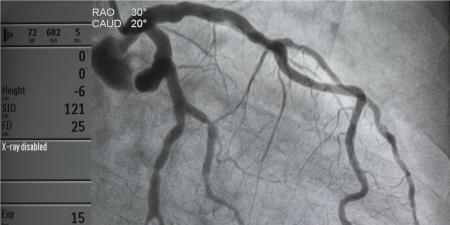Case
Looking at the chart on the way to visit a new patient in the cardiac intensive care unit, Dr. Collins saw that Mr. Addison had been admitted from the emergency department with a diagnosis of presumed infective endocarditis. When he walked into the room, Dr. Collins recognized Mr. Addison. He had cared for him 5 years earlier, when Mr. Addison had had a mitral valve replacement.
At that time, Mr. Addison had been 40 years old and had a history of intravenous drug use. After the surgery, he had entered a drug rehabilitation program and had remained drug-free (confirmed by urine toxicology screening).
When Dr. Collins began interviewing Mr. Addison, the patient admitted having relapsed into drug use, and, Dr. Collins noted, there were fresh tracks on Mr. Addison’s arms. The echocardiogram from the emergency department showed vegetations on the mitral valve consistent with recurrent infective endocarditis.
The typical clinical management approach would be to examine the patient and recommend that a surgeon be consulted to discuss emergency valve replacement, but Dr. Collins paused. Mr. Addison’s relapse was almost certainly a direct result of his renewed drug use. Dr. Collins could just turf the case to the cardiac surgeon and leave the decision up to him or her, but he wondered whether he had some responsibility to intervene at this point and ask some serious questions about the use of medical resources and money to keep patching up people who abused their bodies, in this instance, unlawfully.
Commentary
This case bears some resemblance to a consult I recall from my ethics fellowship training. A drug user was admitted through the emergency department one week after he had been discharged. During the previous hospitalization, he had been verbally abusive to all staff members and had eventually left against medical advice. The consult question from the beleaguered medicine team was, “Do we have to take care of this patient?” My knee-jerk answer was: “Of course you have to take care of him. You are medical professionals with a duty to care for your patients.” The AMA Code of Ethics clearly states that “the relationship between patient and physician…gives rise to physicians’ ethical obligations to place patients’ welfare above their own self-interest and above obligations to other groups, and to advocate for their patients’ welfare” [1]. Perhaps a similarly reflexive answer to Dr. Collins is that he should not put the interests of taxpayers, or Mr. Addison’s insurance company, or society (the “other group”) above those of his difficult patient. Instead of worrying about other people’s money, he needs to buckle down and care for his patient.
But before we upbraid either the good Dr. Collins or the medicine team, we must realize that they are us. At some point in all of our careers, frustration at the follies and noncompliance of patients compromises our humanism. For many, it rears its head in the middle of the night after a long day. I recall dragging myself to the elevator one night during internal medicine residency to see yet another demented nursing home patient in the emergency department, bound for a lengthy stay on the general medicine ward. I was wishing, hoping, even yearning that the patient would die before I reached the ground floor. I really, sincerely felt that way.
Later, after sleeping, I was shocked at my own callousness. Then I ran into a colleague, a perpetually upbeat and always ethically appropriate future chief resident who confided, “I have to tell you, I hate my patients.” I think both of us were tired to the point of being brutally honest. But I can remember other times when frustration with patients was sublimated into musings about the waste in medical care. At our lowest points, we can become very philosophical about limited resources. Now, to be clear, there is nothing wrong with feeling frustrated, but we should guard against disguising our personal feelings as generalized conclusions about whether we should or should not treat patients. As James Groves eloquently expressed, “when this ideal of the perfect physician collides with the quotidian realities of caring for sick and troubled patients...there may be a desperate attempt to avoid or to extrude the patient from the care-giving system” [2]. This “attempt to avoid or to extrude” can be subconscious, with a thin veneer of rationalization covering deep frustration.
Assume that Dr. Collins was clearly and objectively evaluating the situation, without any personal disappointment or prejudice. Would an expensive valve replacement for Mr. Addison be a waste of resources? There are at least two ways of looking at this question. I think we can quickly dispense with the first: that Mr. Addison is not worth a valve replacement. Except in moments of extreme frustration, there are few physicians who would deny a patient needed care because of the patient’s moral failings or perceived lack of social worth. The days of the “God committee”—when a small group at Swedish Hospital in Seattle decided who would receive access to the first kidney dialysis machines on the basis of a complicated algorithm which included social worth—are mostly behind us [3]. We do consider behavioral factors such as active drug use to be contraindications to receiving limited resources, like transplants, not because drug use lessens the intrinsic worth of the patient but because the patient is unlikely to be able to care for the organ as well as someone who is not addicted to drugs.
This behavioral consideration is related to the second view of the question: futility. Replacing Mr. Addison’s valve is a useless endeavor, this argument goes, because he will simply infect it again. He cannot keep getting the valve replaced indefinitely. Each time the chest is opened for cardiac surgery, adhesions form, making the next surgery more difficulty and risky. In essence, the idea is that there is no way to keep an artificial valve free from infection in Mr. Addison because of his behavior, and, eventually, it will not even be possible to replace the infected valve. Valve replacements are not limited resources in the same way that organs are, but they are expensive. Why waste the money?
There is another way to think about Mr. Addison. His addiction to drugs is a medical condition that precludes the success of standard therapy. It is similar to the traditional thinking about performing a heart transplant on patients with cardiac amyloidosis—the amyloid will eventually affect the new heart; or the traditional thinking about stenting left main coronary artery lesions—they are better left for coronary bypass surgery. But recently heart transplants have been found to have survival benefit in some cardiac amyloid patients, and some left main coronary artery lesions have been successfully stented. The point is that the definition of when a given therapy is futile is not set in stone. Just as thinking about transplant in cases of cardiac amyloidosis and stenting left main lesions is changing, the inability of Mr. Addison to keep his valve free of vegetations is not a foregone conclusion. Nor is his addiction to drugs untreatable (newer pharmacological and psychological interventions may substantially improve long-term abstinence). Of course, not every cardiac amyloid patient receives a transplant, and not every patient with a left main coronary artery lesion is appropriate for stenting. And there definitely are clinical situations in which given therapies are truly futile.
There is no guarantee that Mr. Addison will stay off drugs (or free of endocarditis even if he does). The question of whether a valve replacement for Mr. Addison is a waste of resources or a good investment hinges, to some extent, on probabilities. Perhaps there are ways to risk-stratify Mr. Addison in this regard, to perform a psychological pre-operative risk assessment. We know that he successfully completed a drug rehabilitation program (favorable risk predictor), but we are not told other important details about how long he remained sober before his relapse, whether he has a stable social situation, how severe his drug habit is, whether he has a separate mental illness diagnosis, and so on. Mr. Addison did keep his first valve for 5 years, about half of the average lifespan of a valve (assuming he had a biological valve, rather than the more durable mechanical valve). Was this a good investment? If not, how long must a valve last to make it a good investment?
Even if our assessment suggests that Mr. Addison is a high risk for relapse, his situation is no more futile than that of the person with diabetes and coronary artery disease who smokes and frequents all-you-can-eat buffets. Such an individual certainly uses more medical resources than the person with well-controlled diabetes. These resources may, over time, exceed the cost of valve replacement. There are legal and moral aspects of Mr. Addison’s drug use, but arguments about futility and cost-effectiveness probably cannot distinguish between the drug user and the profligate diabetic. The unwillingness or inability to change behavior on the part of either patient costs money. In fact, it is difficult to think of a medical condition in which perfect adherence to medicine, diet and exercise recommendations, and follow-up care would not end up saving at least some money (except that they keep people alive longer—after burial or cremation, death is cheap). Few clinicians would consider it ethically justified to deny therapy to the person with poorly controlled diabetes. And, at this point at least, those whose money is being spent, whether the insurance company or society, have not decided to ration care based on behavior. It is not really Dr. Collins’s place to make such decisions on behalf of these entities.
Thus, Dr. Collins has an ethical duty to intervene, but not to circumvent a medically indicated treatment in order to protect society’s resources. It is difficult to define what futility means in this case, much less to assign it in a single clinical encounter. Dr. Collins should not just “turf” the decision to the surgeon, but should take an active part in the medical decision-making process. If Mr. Addison reenters a treatment program and successfully deals with his addiction, the resource of a new valve would definitely be well used. Even if he does not, and even though it is frustrating, Dr. Collins should continue to treat him as he would his other patients, many of whom probably also exhibit costly, resource-intense behaviors.
References
-
American Medical Association. Opinion 10.015 The patient-physician relationship. Code of Medical Ethics. Chicago, IL: American Medical Association; 2008-2009. http://www.ama-assn.org/ama/pub/physician-resources/medical-ethics/code-medical-ethics/opinion10015.shtml. Accessed September 10, 2010.
- Groves JE. Taking care of the hateful patient. N Engl J Med. 1978;298(16):883-887.
- Jonsen AR. The god squad and the origins of transplantation ethics and policy. J Law Med Ethics. 2007;35(2):238-240.



